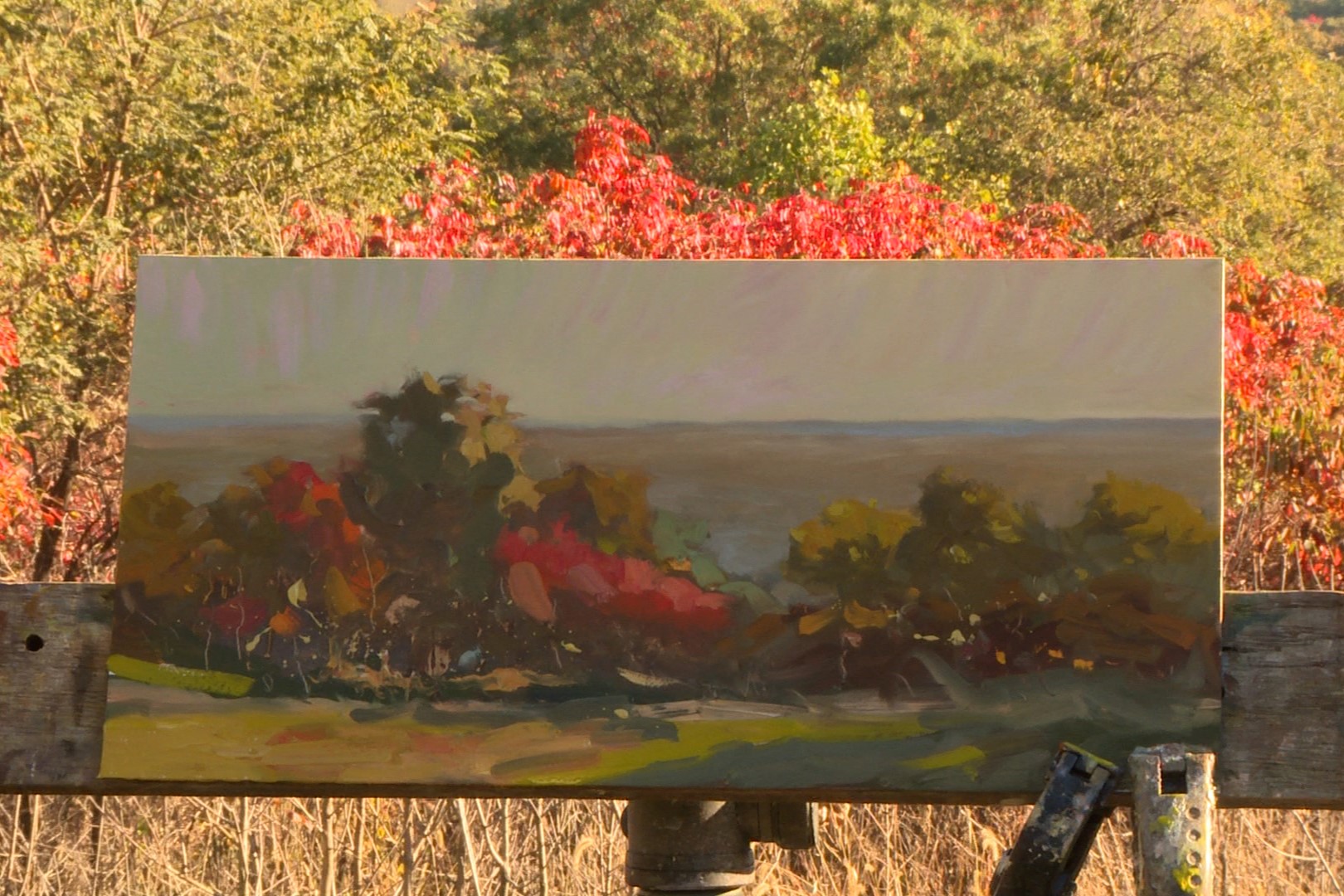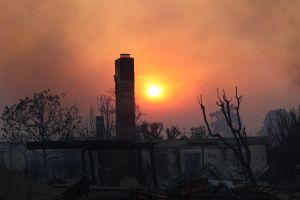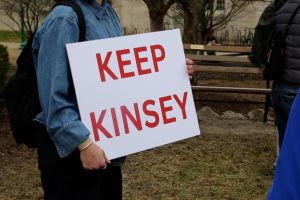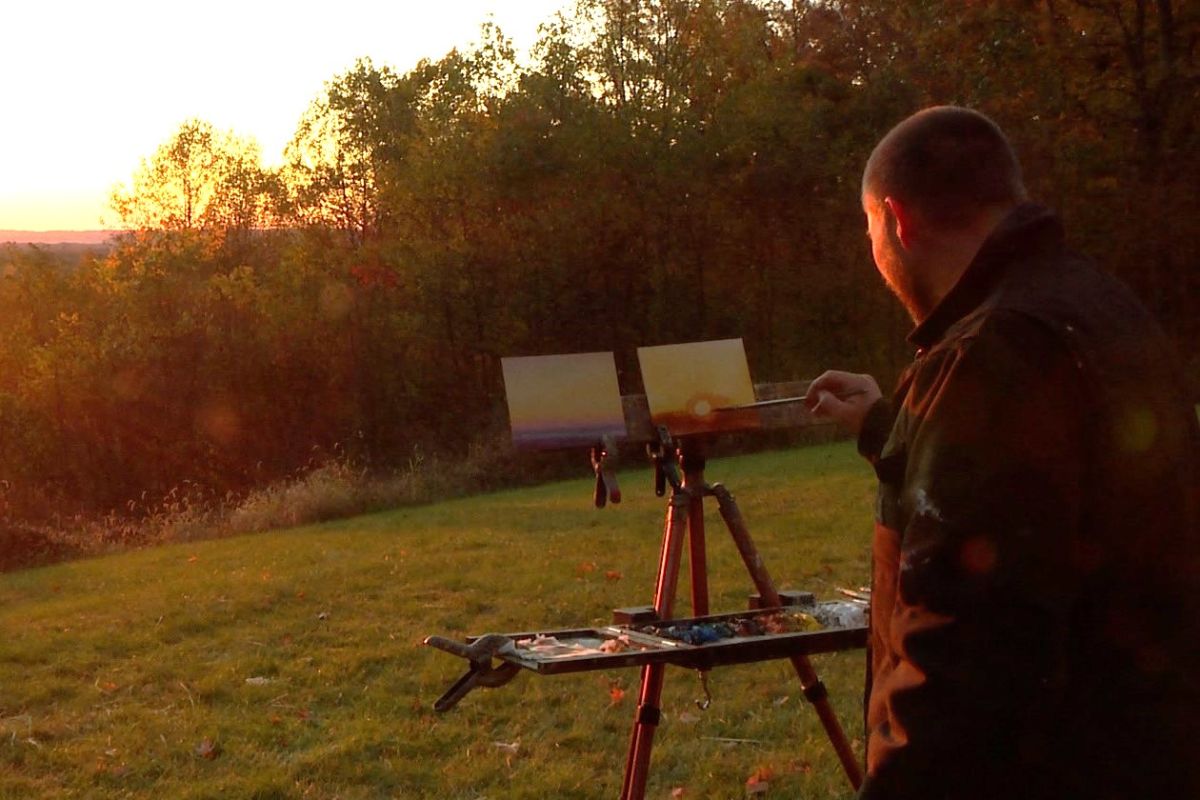
Painter Justin Vining works at his portable studio at Brown County State Park. (Lauren Tucker/WTIU News)
When the leaves start to change color, many will travel to Brown County State Park to take in views reminiscent of the Great Smoky Mountains.
While most take photos of the landscapes, others capture the moments with brush and canvas.
During peak leaf season, Justin Vining gets up at 5:30 and makes the hour-long drive to the park a few times a week to “chase the light” and paint the sunrise.
He sets up his portable studio at the Weedpatch Vista and puts washes of oil paints on the canvas.
As the sun peeks over the forest horizon, he fills in the details of the foliage.
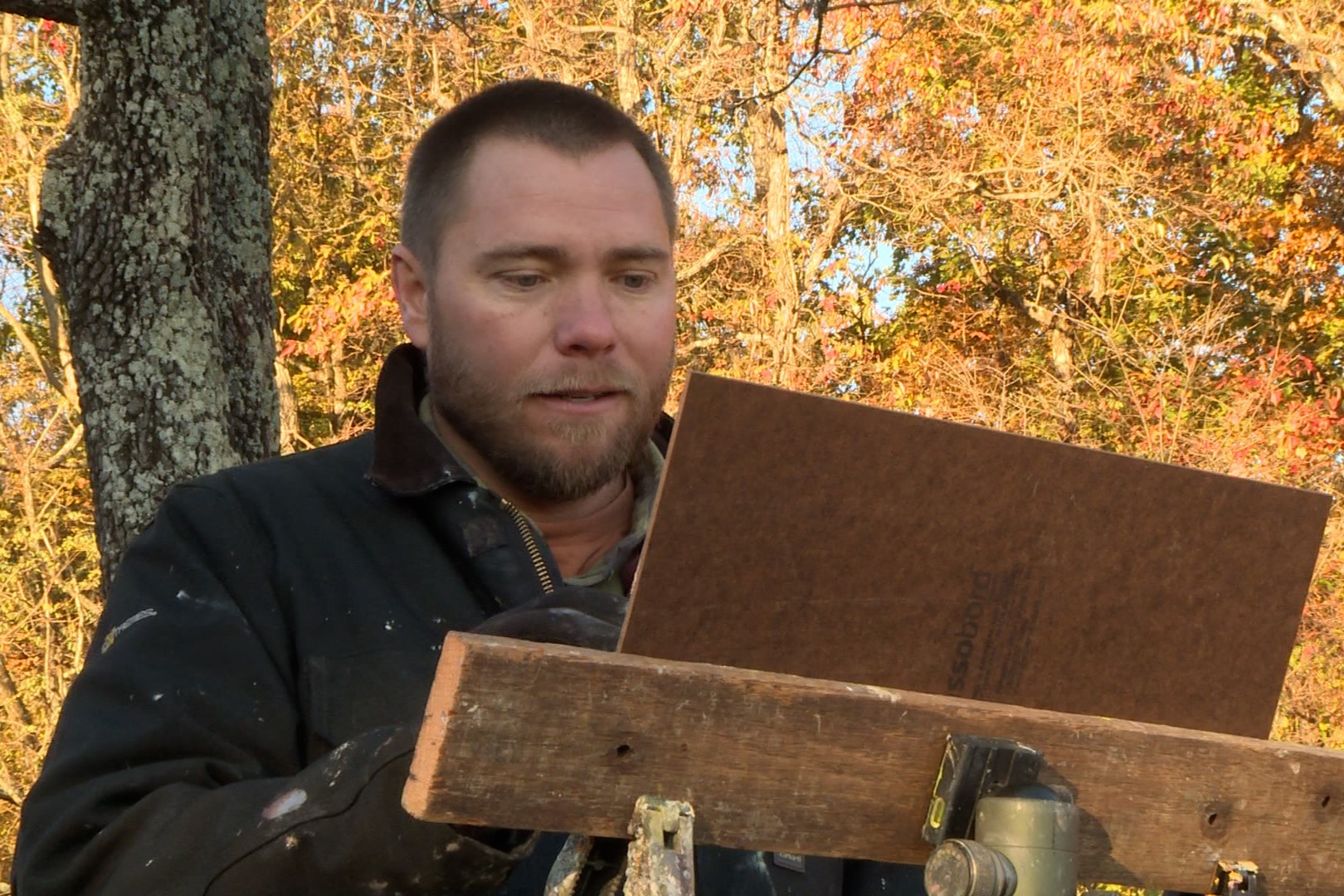
Justin Vining has been a full-time painter for 13 years. (Lauren Tucker/WTIU News)
The Indianapolis-based painter has been visiting Brown County State Park for eight years. He said autumn is his favorite season to paint.
“This time of year, the paintings at sunrise are gonna have, like, a lot more color variety,” he said. “It makes painting them more difficult. But I think that difficulty is also what makes it so much fun and challenging to do.”
Read more: Brown Co. State Park voted third best state park for fall foliage
He said his style of work, en plein air — a French term for open-air painting — comes from the French impressionism movement. Some famous Hoosier artists, including T.C. Steele, learned skills from the same movement in Europe and brought that style back to Indiana.
“They weren't just good painters for Indiana, they were great painters for the world,” he said, "They just happened to live here. Some of the best American impressionist paintings anywhere in the country were created here.”
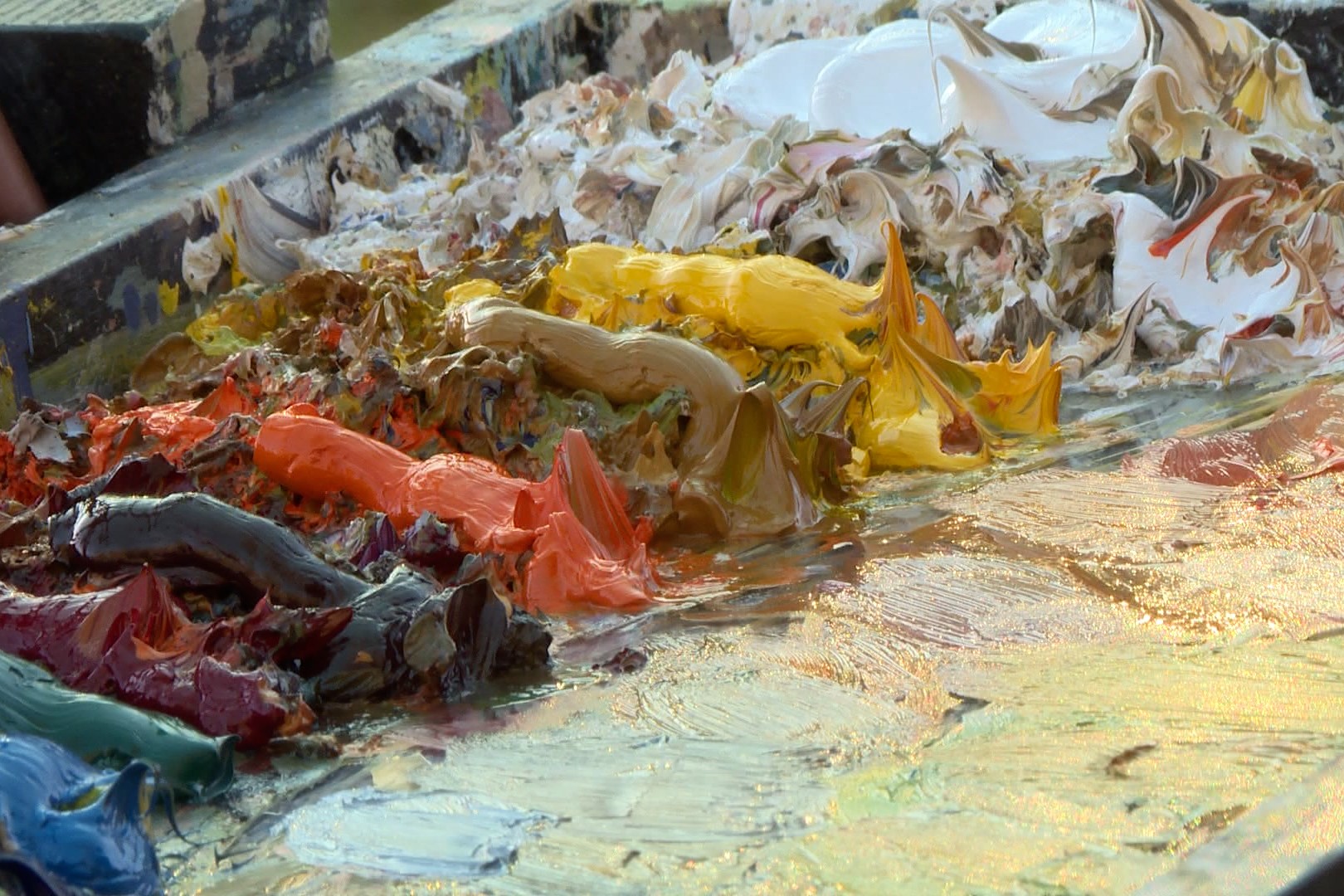
Vining has learned how to take the shapes and colors he sees to the canvas, but said one challenge is viewing his scenes with fresh eyes.
“You know, if I could go back in time and forget everything I know about painting out here and start making paintings fresh again, I actually would probably do that, and I would love to see what those paintings would look like,” he said. “But now, for better or for worse, and probably for both of those, all of that experience informs what I do out here.”
He says all he’s learned over the years is helpful, but sometimes techniques need to be put aside.
“I want to be purposeful and intentional with what I do, but I also want to let sort of the moment take over at times and, like, just be expressive, you know? And I think that's such a balance, because I want my paintings to feel like joy.”
Two mini paintings down, Vining moves to a different spot down the road, Hohen Vista, to work on a larger painting.
“The light this time of day is very fleeting,” he said. “We are somewhat on the clock even right now. I mean, the color has changed quite a bit since we've been standing here.”
In a recent interview, he challenged people to go to the park to watch the sunrise. “This is only an hour from two million people,” he told me. “I mean, we did see two people this morning from North Carolina. You know what I mean? Where's everyone else?”
One person who took him up on that challenge is one of his painter friends, Lynda Brill, who stopped by during the interview.
“The color changes so much,” she said. “You're trying to get the balance between the sky and the color in the trees. And then all of a sudden, the sun starts rising. You're like, ‘Oh my word.’ The color in the trees is just phenomenal.”
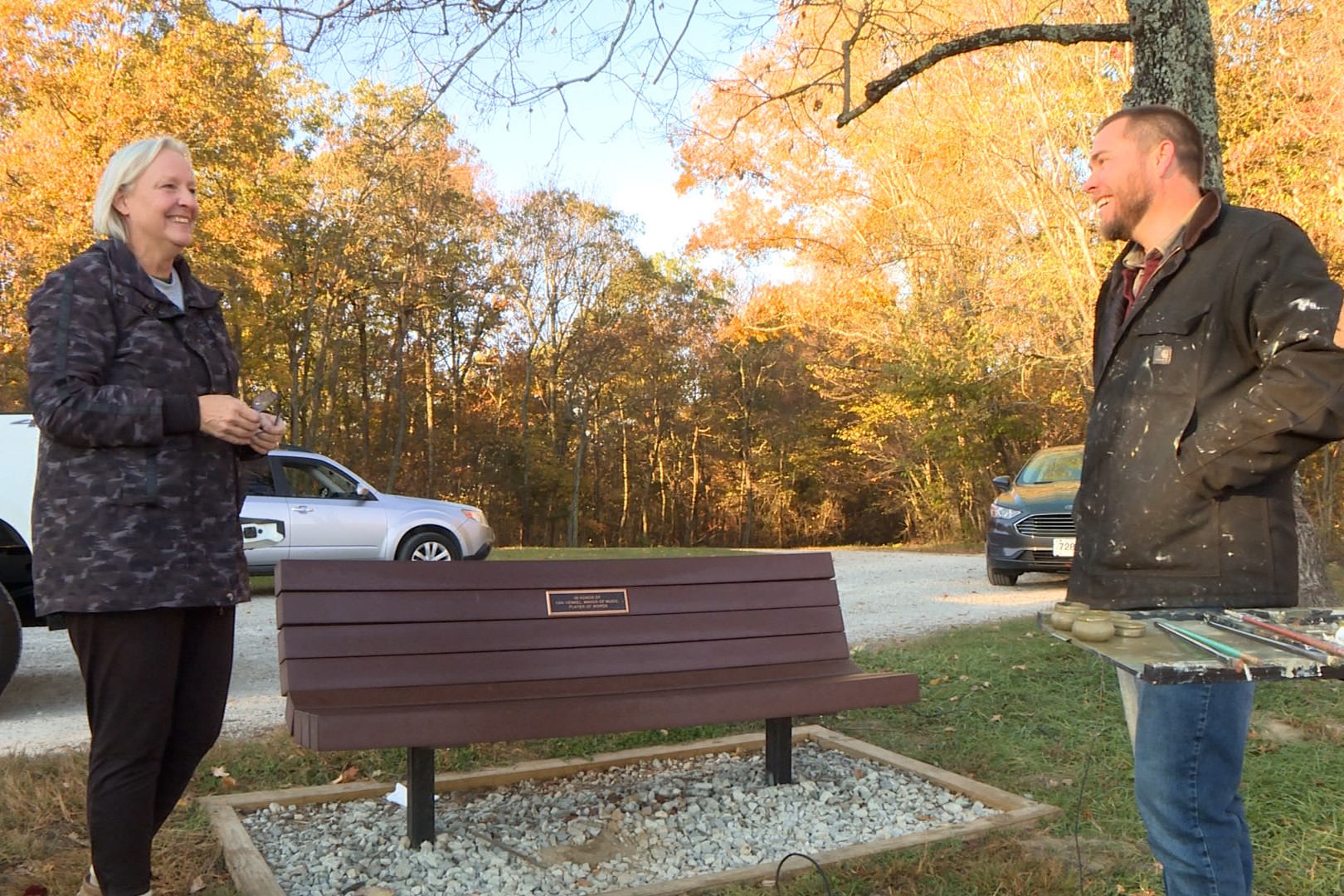
At one point, a family gets out of their car to take a photo at Hohen Vista. A few minutes later, they’re back in their car to the next vista. The park challenges visitors to visit its seven vistas to get a prize. Vining has taken this challenge to the next level by painting each one.
“I think of these as almost like little, very specific Polaroids, snapshots, moments in time. On the back of the painting, I record all that information.” He keeps track of the date, time, temperature, and GPS coordinates.
“I have another line, I'll put, ‘It felt really cold,’ or like ‘I needed two pairs of gloves.’”
Asked for his thoughts on recent advancements in artificial intelligence to generate artwork, he said, “AI can already paint better than I can. What AI will never be able to do is stand here with gloves on and do this.”
